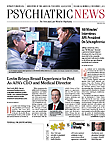Gender dysphoria is new in DSM-5 and reflects a change in conceptualization of its defining features by emphasizing the phenomenon of “gender incongruence” rather than cross-gender identification, as was the case in DSM-IV-TR gender identity disorder. In contrast to the dichotomized DSM-IV-TR gender identity disorder diagnosis, type and severity of gender dysphoria can be inferred from the number and type of indicators and from the severity measures. The experienced gender incongruence and resulting gender dysphoria may take many forms. Gender dysphoria thus is considered to be a multi-category concept rather than a dichotomy and acknowledges the wide variation of gender-incongruent conditions. In the child criteria for gender dysphoria, “strong desire to be another gender” replaces the previous “repeatedly stated desire” to capture the situation of some children who, in a coercive environment, may not verbalize the desire to be of another gender. The subtyping on the basis of sexual orientation is removed because the distinction is no longer considered clinically useful due to lack of clinical utility.
The questions below are from
DSM-5 Self-Exam Questions: Test Questions for the Diagnostic Criteria, which may be preordered from American Psychiatric Publishing at
http://www.appi.org/SearchCenter/Pages/SearchDetail.aspx?ItemId=62467. The answers and rationales are posted at
http://www.psychnews.org/pdfs/DSM-5_Self_Examination_QandA_15.pdf. The book, available in January 2014, contains 500 questions for all the categories of psychiatric disorders and includes Section III. The questions were developed under the leadership of Philip Muskin, M.D., a professor of clinical psychiatry at Columbia University College of Physicians and Surgeons. APA members may purchase the book at a discount.
1. Which of the following must be present to make a diagnosis of gender dysphoria in children?
a) There must be a co-occurring disorder of sex development (DSD)b) There must be a strong desire to be the other gender or an insistence that the person is the other genderc) There must be a strong dislike of one’s sexual anatomyd) The child must have stated a wish to change gendere) There must be a strong desire for the primary and/or secondary sex characteristics that match the experienced gender
2. In DSM-5, which of the following statements are true about the words “gender” and “transgender?”
a) “Gender” refers to the biological indicators of male or female seen in an individualb) “Gender” refers to the individual’s initial assignment of male or female, usually given at birthc) “Gender” refers to the individual’s lived role in society or his/her identification as male or femaled) A “transgender” individual is someone who has undergone a social transition from male to female or female to malee) A “transgender” individual is someone who has sought sex reassignment treatment of some kind
3. Which of the following diagnoses has been eliminated in DSM-5?
a) gender identity disorderb) gender dysphoriac) pedophilic disorderd) transvestic disordere) none of the above ■
